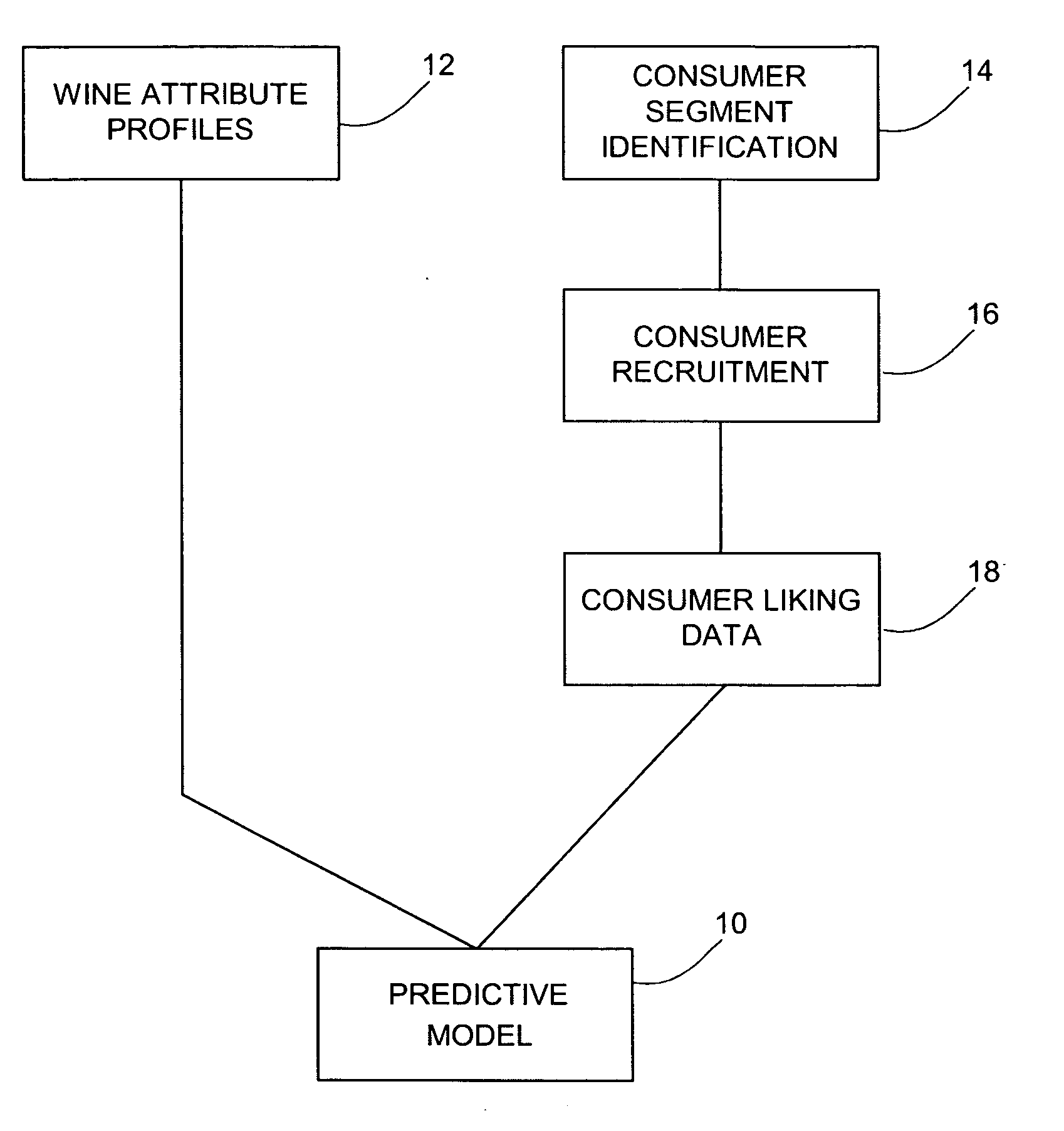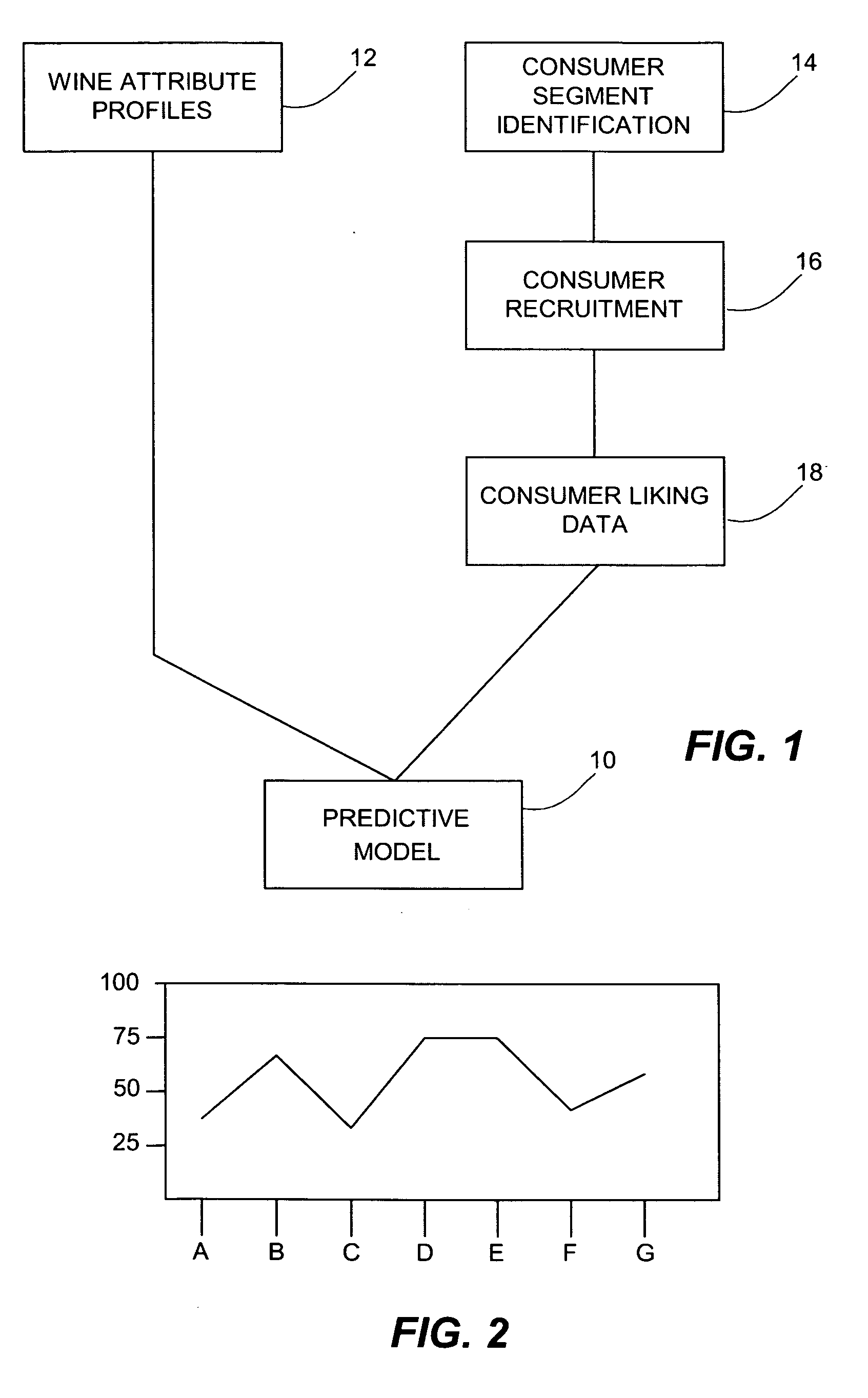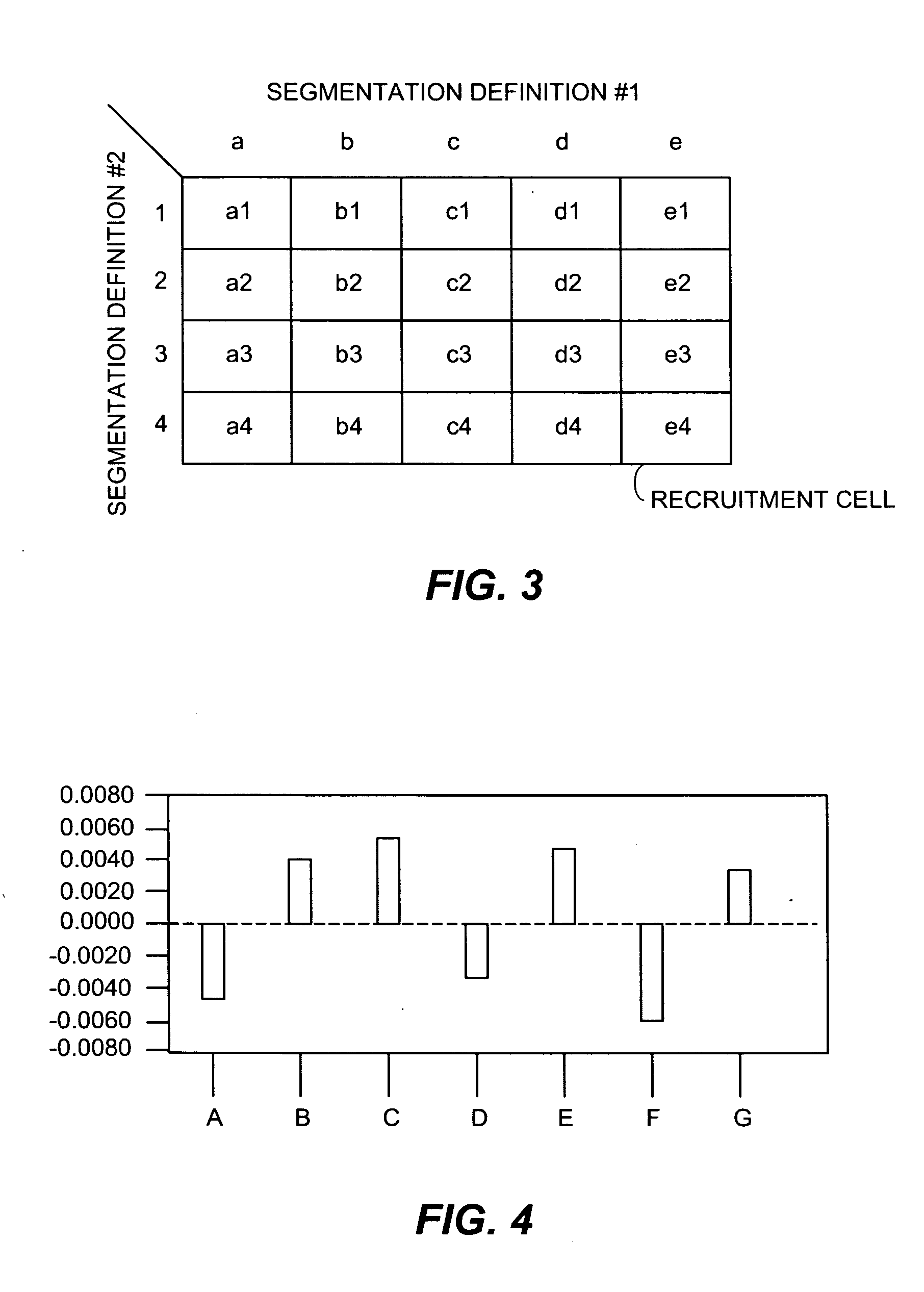Method and apparatus for managing product planning and marketing
a product planning and marketing technology, applied in the field of product planning, can solve the problems of increasing consumer confusion, intimidation and frustration of consumers, and challenging the quality of wine, and achieve the effect of reducing the difficulty of product planning and marketing
- Summary
- Abstract
- Description
- Claims
- Application Information
AI Technical Summary
Benefits of technology
Problems solved by technology
Method used
Image
Examples
Embodiment Construction
Wine characteristic data is related to consumer liking data to provide a predictive model that may be used in wine portfolio management, including selection, shelf placement, pricing, and promotion. The wine characteristic data may relate to wine attributes as determined by a trained panel of experts or by chemical analysis, or to production or process data or to a combination of these data. The consumer liking data may be hedonic data obtained from consumer tasting. The predictive model may be a determined statistical relationship between the characteristic data and the hedonic data. In application, the predictive model may be used to identify what wines will appeal to various consumer segments. Further, the model may be used to identify wines having similar liking characteristics to consumers. Alternatively, the predictive model may be used to identify for particular consumer segments, or even for individual consumers, wines that may be liked.
The wine portfolio, either at the w...
PUM
 Login to View More
Login to View More Abstract
Description
Claims
Application Information
 Login to View More
Login to View More - R&D
- Intellectual Property
- Life Sciences
- Materials
- Tech Scout
- Unparalleled Data Quality
- Higher Quality Content
- 60% Fewer Hallucinations
Browse by: Latest US Patents, China's latest patents, Technical Efficacy Thesaurus, Application Domain, Technology Topic, Popular Technical Reports.
© 2025 PatSnap. All rights reserved.Legal|Privacy policy|Modern Slavery Act Transparency Statement|Sitemap|About US| Contact US: help@patsnap.com



